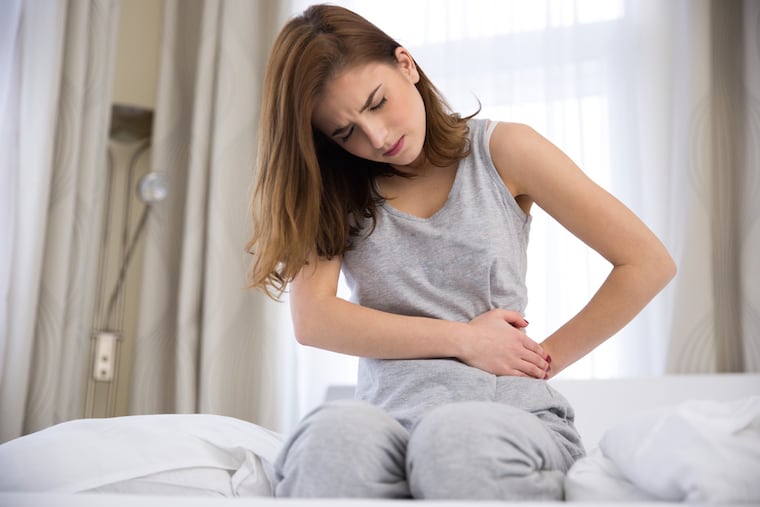Medical mystery: What caused teen’s severe stomach pain?
When the doctor asked the teenager how she alleviates her stomach pain, the answer changed the course of the teen's treatment and pointed to an epidemic, that is becoming more prevalent in both Philadelphia as well as the United States.

A month ago, a patient came to our emergency room whose case underscored a new epidemic — one that wasn’t a part of my medical training almost two decades ago.
One of our pediatric residents was taking care of a 15-year-old girl in the emergency room. She had come to us several times complaining of severe abdominal pain that had her throwing up a few times a day.
In the past, her physician ordered laboratory studies including pregnancy testing — which could explain her nausea — and abdominal ultrasounds looking for problems with her kidneys and other organs. All tests results were normal. She was treated for reflux and was given instructions for stress reduction, which can trigger reflux. But her symptoms continued.
On her most recent visit to the emergency room, her pregnancy test was again negative, but her laboratory studies showed that her sodium and chloride levels were low, evidence that she was vomiting enough to alter her electrolytes. She was given intravenous fluids to replace her lost electrolytes.
Then the pediatric resident asked the teenager how she alleviates her stomach pain. The patient’s answer changed the course of her treatment and pointed to a problem that is becoming more prevalent in Philadelphia and across the United States.
Solution
A basic question that medical students are taught early in their training is to ask a patient who is in pain, “What, if anything, makes your pain better?”
This young woman’s answer was hot showers -- and that led to my colleague unraveling the mystery of why she suffered stomach pain and nausea for so long.
A 2017 study looking at marijuana use in high school students showed that 36% of students in the United States have reported using marijuana. It is the most common illicit drug in the United States and young adults are the largest consumers. There are 2.6 million new users a year and most are under 19 years old. Daily, long-term use can lead to what this patient was suffering: cannabinoid hyperemesis syndrome (CHS).
CHS was first identified in 2004. It is defined by at least weekly cannabis use, onset of cannabis use in the teen years, and nausea, vomiting and abdominal pain alleviated by hot baths or showers. CHS is still not fully understood, but we know that there are multiple cannabinoid receptors in the gastrointestinal tract that can cause these symptoms.
There are typically three phases of CHS. The “prodromal phase,” where one gets morning nausea. This can last for months or years. The next phase is called “hyperemesis,” which is characterized by intense, cyclic vomiting episodes that last for days, and, like our patient, are relieved by hot showers. Patients in this phase can suffer dehydration and electrolyte abnormalities. The “recovery” phase happens very soon after stopping cannabis use.
Why hot baths and showers help relieve the symptoms (some patients have reported taking over a dozen a day) is not fully understood but may be due to a receptor in the gut and brain that is responsible for feeling nauseated and is calmed down with heat.
Patients frequently come to the emergency room multiple times for evaluation before someone considers this diagnosis. A 2018 study showed that almost a third of patients who smoked marijuana more than 20 times a month had symptoms of CHS.
With the first death associated with vaping in Pennsylvania reported this month, and THC levels in marijuana at all-time highs, we all have to be on the look out for CHS, and be prepared to discuss the dangers of vaping and chronic marijuana use. We have to find out why so many of the teens we care for turn to marijuana, and we have to be prepared to consider CHS as a diagnosis of chronic cannabis use and counsel patients about healthier ways to alleviate stress.
Daniel R. Taylor, D.O., is an associate professor at Drexel University College of Medicine and director of community pediatrics and child advocacy at St. Christopher’s Hospital for Children.